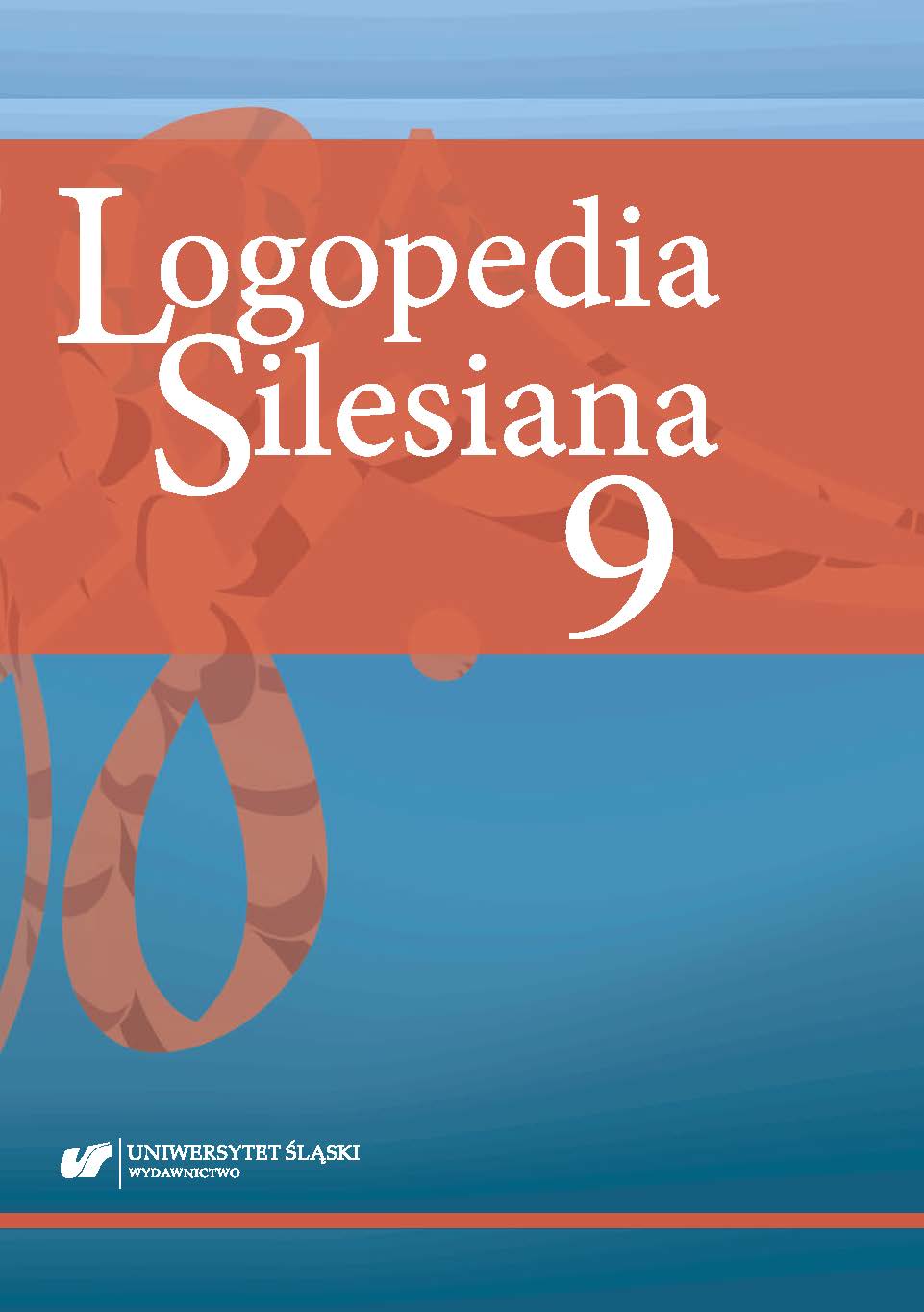Bassi, I.B., & Assunção, A.A. (2015). Diagnosis of dysphonia among municipal employees: individual and work factors. Journal of Voice, 29, 19–26.
Google Scholar
Dunne, P.J, et al. (2019). Burnout in the emergency department: Randomized controlled trial of an attention-based training program. Journal of Integrative Medicine, 17(3), 173–180.
Google Scholar
Ferreira de Brito Mota, A., et al. (2019). Voice disorder and burnout syndrome in teachers. Journal of Voice, 33(4), 581.e7–581.e16.
Google Scholar
Freudenberger, H.J. (1974). Staff burnout. Journal of Social Issues, 30, 159–165.
Google Scholar
Freudenberger, H.J. (1984). Burnout: The high cost of high achievement. New York: Garden City.
Google Scholar
Guzy, A. (2019). Wybrane czynniki psychospołeczne a występowanie trudności głosowych wśród nauczycieli. Logopedia Silesiana, 8, 274–297.
Google Scholar
Jałowska, M. (2012). Ocena realizacji postępowania profilaktycznego i diagnostyczno-leczniczego u nauczycieli w ramach programu „Chroń swój głos” na materiale Wielkopolskiego Centrum Medycyny Pracy w latach 2007–2011 [PhD thesis]. Care of sciences dr hab. B. Wiskirska-Woźnica. Poznań: Uniwersytet Medyczny w Poznaniu.
Google Scholar
Kirenko, J., & Zubrzycka-Maciąg, T. (2011). Współczesny nauczyciel. Studium wypalenia zawodowego. Lublin: Wydawnictwo Uniwersytetu Marii Curie-Skłodowskiej.
Google Scholar
Kocór, M. (2010). Szkoła i nauczyciel a syndrom wypalenia zawodowego. Rzeszów: Mitel.
Google Scholar
Kwieciński, Z. (1992). Socjopatologia edukacji. Warszawa: Wydawnictwo Naukowe PWN.
Google Scholar
Mańkowska, B. (2016). Wypalenie zawodowe. Źródła, mechanizmy, funkcje. Gdańsk: Harmonia.
Google Scholar
Maslach, Ch., & Leiter, M.P. (2011). Prawda o wypaleniu zawodowym. Co robić ze stresem w organizacji. Warszawa: Wydawnictwo Naukowe PWN.
Google Scholar
Maslach, Ch. (2011). Wypalenie w perspektywie wielowymiarowej (pp. 13–31). In: H. Sęk (ed.), Wypalenie zawodowe. Przyczyny i zapobieganie. Warszawa: Wydawnictwo Naukowe PWN.
Google Scholar
Morrow, S.L., & Connor, N.P. (2011). Comparison of voice-use profiles between elementary classroom and music teachers. Journal of Voice, 25(3), 67–72.
Google Scholar
Nalaskowski, A. (1997). Nauczyciele z prowincji u progu reformy edukacji. Toruń: Wydawnictwo Adam Marszałek.
Google Scholar
Pasikowski, T. (2004). Polska adaptacja kwestionariusza Maslach Burnout Inventory. In: H. Sęk (ed.). Wypalenie zawodowe. Przyczyny i zapobieganie (pp. 135–140). Warszawa: Wydawnictwo Naukowe PWN.
Google Scholar
Pines, A.M. (1993). Burnout: An existential perspective. In: W.B. Schaufeli, Ch. Maslach, T. Marek (eds.), Professional burnout: Recent developments in theory and research (pp. 33–51). Washington, DC: Taylor & Francis.
Google Scholar
Preciado, J., Perez, C., Calzada, M., & Preciado, P. (2005). Function vocal examination and acoustic analysis of 905 teaching staff of La Rioja, Spain. Otorrinolaringológica Española, 56(6), 261–271.
Google Scholar
Rzepa, M. (2010). Choroby zawodowe narządu głosu wśród nauczycieli. Nauczyciel i Szkoła, 3(48), 141–153.
Google Scholar
Sas-Nowosielski, K., & Kowalczyk, A. (2019). The self-efficacy of physical education teachers and burnout in the teaching profession. The New Educational Review, 58(4), 179–188.
Google Scholar
Sekułowicz, M. (2005). Nauczyciele szkolnictwa specjalnego wobec zagrożenia wypaleniem zawodowym. Wrocław: Wydawnictwo Naukowe Dolnośląskiej Szkoły Wyższej Edukacji TWP.
Google Scholar
Sęk, H. (ed.) (2011). Wypalenie zawodowe. Przyczyny i zapobieganie. Warszawa. Wydawnictwo Naukowe PWN.
Google Scholar
Smith, E., Lemke, J., Taylor, M., Kirchner, H.L., & Hoffman, H. (1998). Frequency of voice problems among teachers and other occupations. Journal of Voice, 12(4), 480–488.
Google Scholar
Smith E., Gray, S.D., Dove, H., Kirchner, L., & Heras, H. (1999). Frequency and effects of teachers’ voice problems. Journal Voice, 13(4), 484–489.
Google Scholar
Stanek, K.M. (2016). Wypalenie zawodowe pracowników socjalnych. Stan i uwarunkowania w aspekcie pracy zawodowej. Katowice: Wydaw. Naukowe „Śląsk”.
Google Scholar
Steuden, S., & Okła, W. (1998). Tymczasowy podręcznik do Skali Wypalenia Sił-SWS. Wydanie eksperymentalne. Lublin: Wydaw. Katolickiego Uniwersytetu Lubelskiego.
Google Scholar
Synal, J., Szempruch, J. (2017). Od zapału do wypalenia? Funkcjonowanie nauczycieli w codzienności szkolnej. Kielce: Wydawnictwo Uniwersytetu Jana Kochanowskiego.
Google Scholar
Śliwińska-Kowalska, M., Pyżalski, J., Niebudek-Bogusz, E., & Merecz, D. (2004). Obciążenia psychofizyczne w zawodzie nauczyciela i ich wpływ na zdrowie. Łódź: Instytut Medycyny Pracy im. prof. J. Nofera.
Google Scholar
Tucholska, S. (2009). Wypalenie zawodowe u nauczycieli. Psychologiczna analiza zjawiska i jego osobowościowych uwarunkowań. Lublin: Wydawnictwo Katolickiego Uniwersytetu Lubelskiego.
Google Scholar
Vilkman, E. (2004). Occupational safety and health aspects of voice and speech professions. Folia Phoniatrica, 56(4), 220–253.
Google Scholar


 https://doi.org/10.31261/LOGOPEDIASILESIANA.2020.09.01
https://doi.org/10.31261/LOGOPEDIASILESIANA.2020.09.01

 10.31261/LOGOPEDIASILESIANA
10.31261/LOGOPEDIASILESIANA